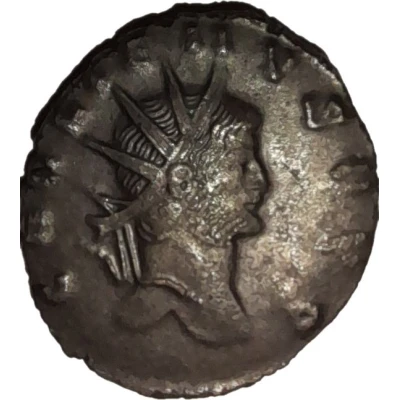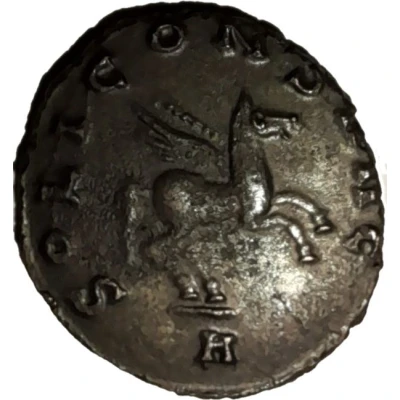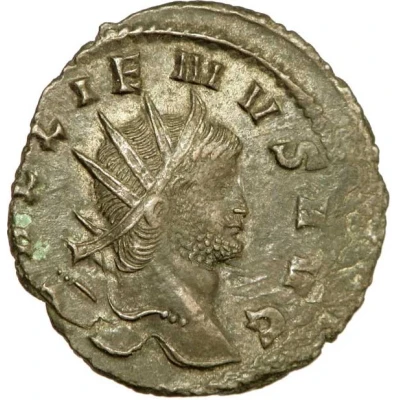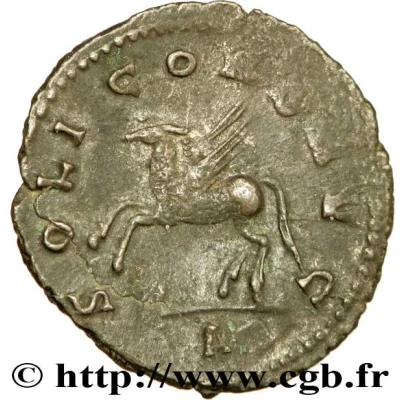Antoninianus - Gallienus SOLI CONS AVG
| Silver | - | - |
| Issuer | Rome › Roman Empire (27 BC - 395 AD) |
|---|---|
| Emperor | Gallienus (Publius Licinius Egnatius Gallienus) (253-268) |
| Type | Standard circulation coin |
| Years | 260-268 |
| Value | Antoninianus (1) |
| Currency | Antoninianus, Reform of Caracalla (AD 215 – 301) |
| Composition | Silver |
| Shape | Round (irregular) |
| Technique | Hammered |
| Demonetized | Yes |
| Updated | 2024-10-05 |
| Numista | N#288849 |
|---|---|
| Rarity index | 100% |
Reverse
Pegasus, left, springing heaven-ward. Officina mark in exergue.
Script: Latin
Lettering:
SOLI CONS AVG
H
Translation:
Soli Conservatori Augusti.
Sol, protector of the emperor (Augustus).
Comment
Source:Online Coins of the Roman Empire (OCRE)
Interesting fact
The Antoninianus, also known as the "Gallienus," was a coin introduced by the Roman Emperor Gallienus in 260 AD, during a time of economic crisis and political instability. It was made of silver, but its purity was lower than that of previous Roman silver coins, which had been debased over time to pay for military campaigns and other expenses. Despite this, the Antoninianus remained a widely used coin throughout the Roman Empire until its fall in 395 AD. One interesting fact about this coin is that it features an image of the Roman goddess Sol, or "Soli Cons Avg," on the obverse (front side), which was a departure from the traditional depiction of Roman emperors on coins. This was a deliberate choice by Gallienus to promote the cult of Sol, which was popular among soldiers and the common people, and to emphasize his own connection to the divine. The coin's design was meant to convey a message of hope and renewal during a time of turmoil, and it remains a fascinating example of ancient Roman currency and culture.



